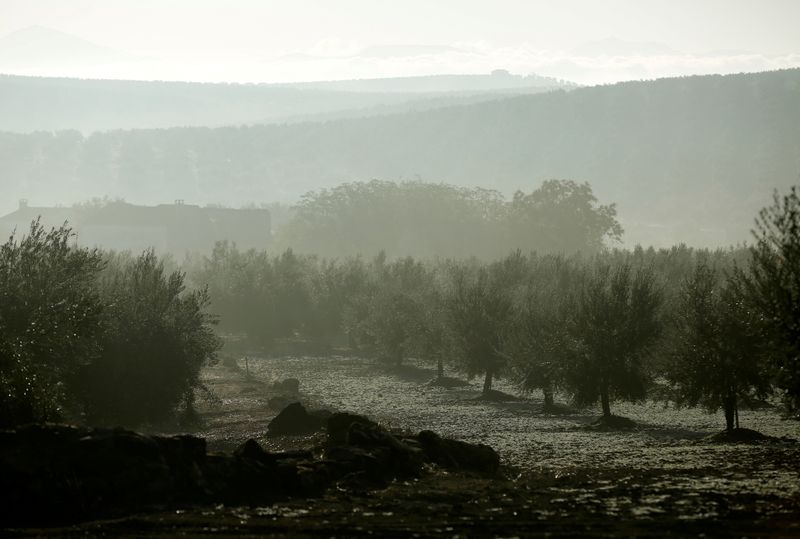MADRID (Reuters) - Drought in Spain, the world's largest olive oil producer, is likely to halve the country's output this year compared with the previous year, official estimates from the European Commission show, pushing prices up.
Spain usually supplies about 40% of the world's output. However, heatwaves when the olive trees were flowering last spring and a severe drought since last summer in Spain and in number two and four producers Italy and Portugal have shrunk stocks.
Only the EU's third biggest largest producer, Greece, which was not hit by the weather conditions, was expecting production to improve, though not enough to offset the decline in Spain.
"It's a catastrophe," said Primitivo Fernandez, head of Spain's National Association of Edible Oil Bottlers, as he highlighted the conjunction of drought, economic crisis and the war in Ukraine.
Spanish exporters' association Asoliva estimates there will be at least 10% less olive oil available worldwide this year from the 3.1 million tonnes produced in the season ending in 2021.
"Every day that goes by without rain, the forecasts get worse," Dcoop, Spain's largest olive oil producers' cooperative, told Reuters.
In Spain, the price of bottles of olive oil rose by around 60% in 2022, according to industry groups and companies consulted.
The price hike was initially triggered by a scarcity of sunflower oil last year after Russia invaded Ukraine. But soaring inflation, costlier fertilisers and the drought continue to push prices upwards.
A litre of virgin olive oil is sold in Spain for over 7 euros ($7.51), when in February 2022 the price was below 5 euros.

The price hikes have reduced sales volumes of olive oil in Spain by 8% in the year to February, according to a study by consulting firm Nielsen.
($1 = 0.9318 euros)